|
|
#43 |
|
Senior Member
Join Date: Mar 2017
Drives: Q5 + BRZ + M796
Location: Santa Rosa, CA
Posts: 7,883
Thanks: 5,668
Thanked 5,804 Times in 3,299 Posts
Mentioned: 70 Post(s)
Tagged: 0 Thread(s)
|
It seems like if these Sikky headers fit then the stock ones could be bent to fit to pass emissions.
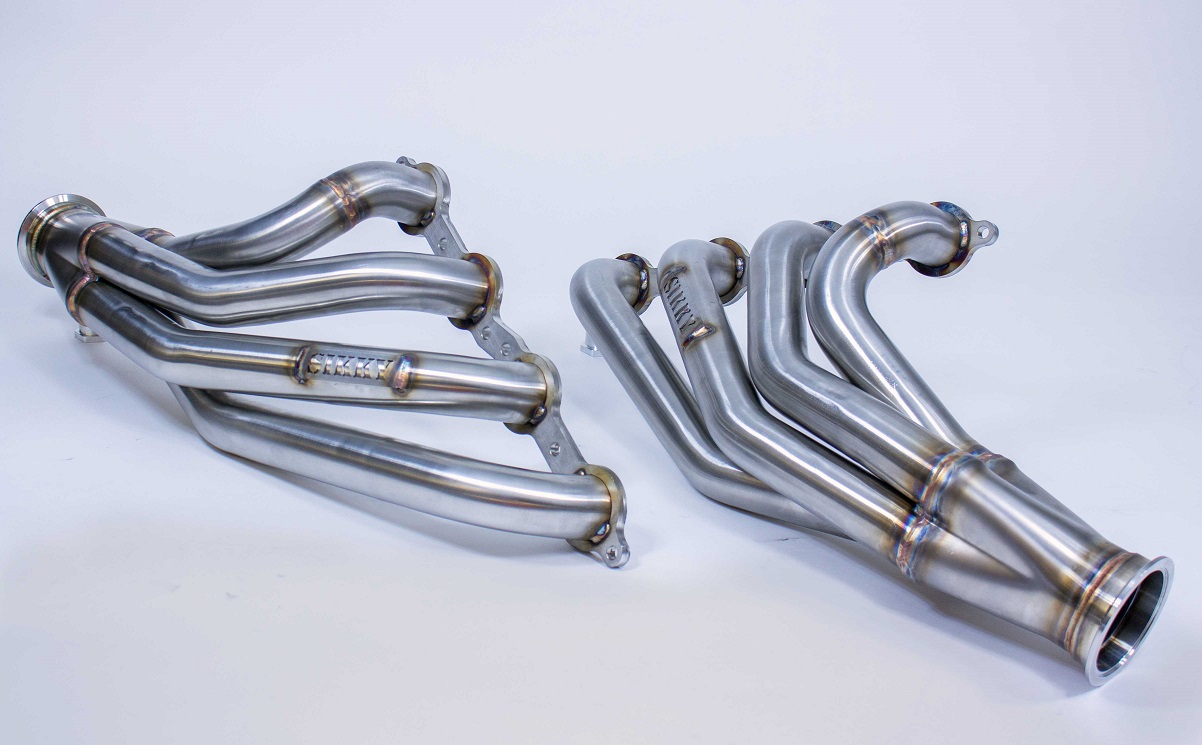 
__________________
My Build | K24 Turbo Swap | *K24T BRZ SOLD*
|
|
|

|
|
|
#44 |
|
Senior Member
Join Date: Nov 2019
Drives: 2013' Toyota 86 (EU spec)
Location: Germany
Posts: 160
Thanks: 32
Thanked 139 Times in 56 Posts
Mentioned: 4 Post(s)
Tagged: 1 Thread(s)
|
Camaro Gen5 OEM headers should fit for sure. But I think from there it will be close to impossible if you dont at least change the tubing between the different components massively. The converters I think wil be way to far back and definately much to far down. Also I think they will not fit into the only space you have for them what is pretty much above and slightly behind the steering rack and stabilizer due to the two components design. I would guess one would need to lift the 86 Chassis to fit Gen5 OEM converters with OEM DP and headers underneath. The LS is lying arround 4 inches closer to the ground in the 86 Chassis than in the Gen5.
|
|
|

|
|
|
#45 |
|
Senior Member
Join Date: Nov 2019
Drives: 2013' Toyota 86 (EU spec)
Location: Germany
Posts: 160
Thanks: 32
Thanked 139 Times in 56 Posts
Mentioned: 4 Post(s)
Tagged: 1 Thread(s)
|
Due to not available spare parts for the GTO OEM remote shifter I started development of a homemade T56 GTO / T56 Magnum F short shifter. Design is minimal shorter than OEM GTO shifter, but scalable to different length. In addition it has a little different design atempt, so that not only travel along the alley is reduced, also travel between the alleys shall be minimized. Last measurements, manufacturing of the first prototype and practical testing pending, but I think the design already looks promissing. Shifter will also have a full dustcap as the OEM shifter, but more rigid and better sealed to the base plate. Shifter boot of the OEM GTO shifter or of a standard Tremec shifter will be reused and is not shown. All bearings are sintered bronze or PTFE coated steel. Cant wait to test it...
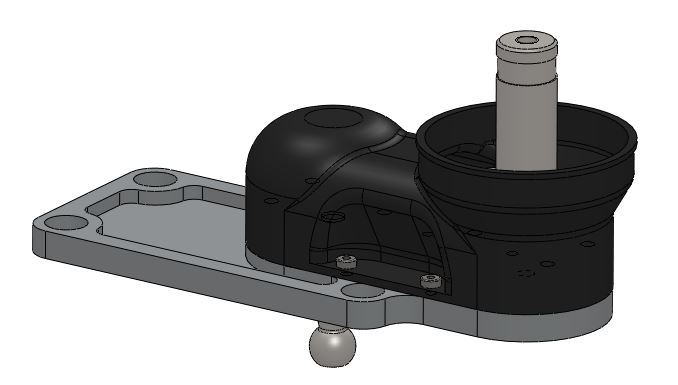  BTW: The car itself has sucessfully passed around 4500 miles of test and road driving, including a holiday trip more or less once accross Europe. No major issues or unwanted stops. Issues found during that drive: -Cooling needs to be improved, thinking about different radiator setup and additinal vents for engine compartment -Sloppy, ratteling GTO shifter needs to be replaced, own development in progress -OEM LS3 clutch is done after serveral starts on Semisliks, LS7 clutch will be installed shortly -Release bearing will be changed to Tilton 6000 series since I again am dealing with slight leakage as I already had during assembly -Small oil leakage on rear main seal will be fixed with clutch exchange, I assume high pressure/high flow oil pump shot old sealing -Exhaust will be reworked a little since current version is reducing ground clearance by about 30mm what was a little anoying on south european back roads  Proof of holiday test drive: 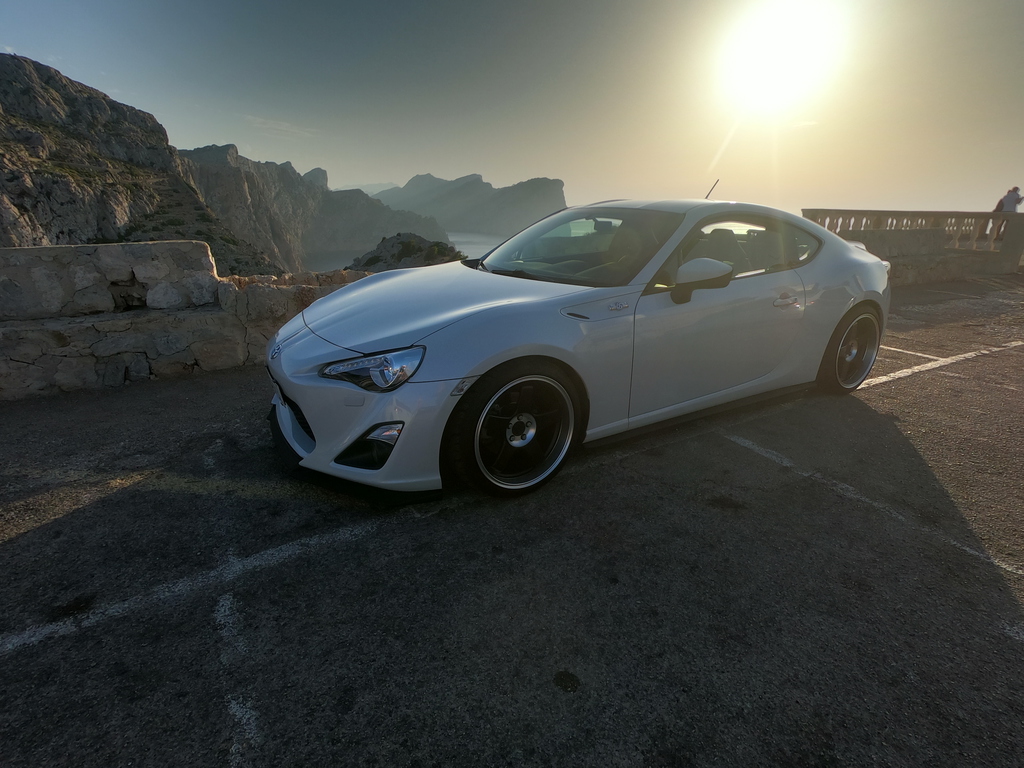 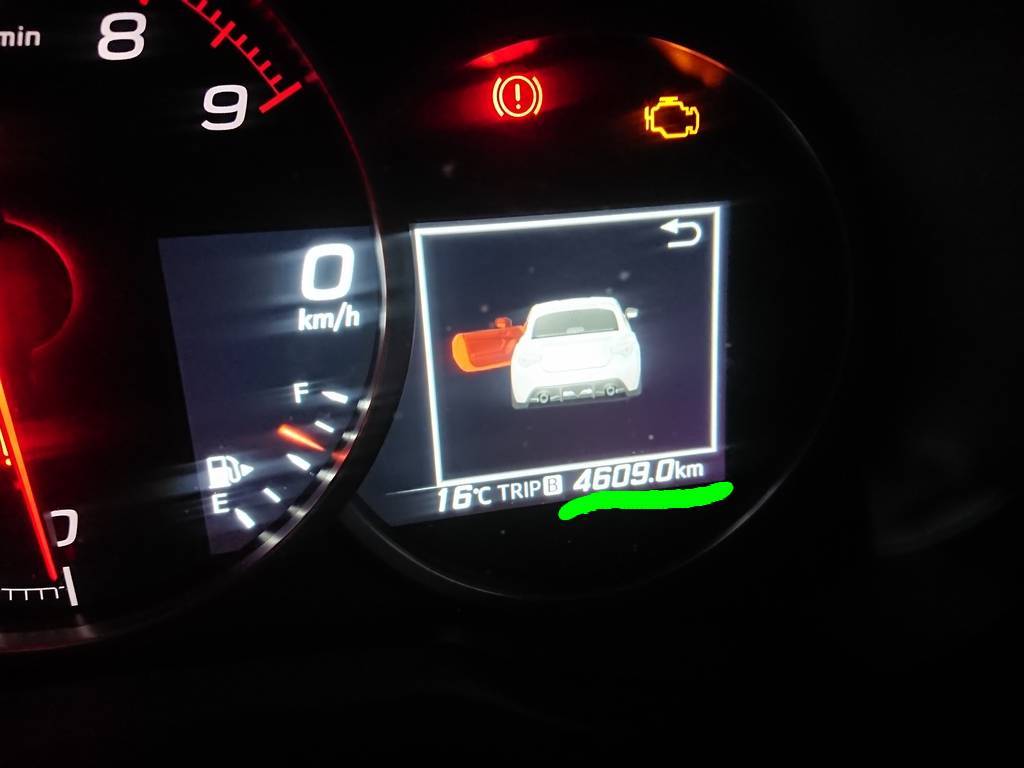 I´d say not bad for a completely homemade LS swap with own development and manufacturing of all custom components, especially when taking into consideration, that it did this drive/distance pretty much as it was at the first rollout after the swap. 
Last edited by TRS; 08-28-2020 at 06:46 PM. |
|
|

|
| The Following User Says Thank You to TRS For This Useful Post: | StraightOuttaCanadaEh (08-28-2020) |
|
|
#46 |
|
Senior Member
Join Date: Mar 2018
Drives: LS Swapped Scion FRS = 440HP
Location: Dayton OH
Posts: 298
Thanks: 37
Thanked 276 Times in 134 Posts
Mentioned: 19 Post(s)
Tagged: 0 Thread(s)
|
Sorry if i missed it, do you have any bushings in your motor mounts?
Also whats the distance between the driver side cylinder head and the firewall? I know you said your master cylinder was around 75mm total.
__________________
|
|
|

|
|
|
#47 | ||
|
Senior Member
Join Date: Nov 2019
Drives: 2013' Toyota 86 (EU spec)
Location: Germany
Posts: 160
Thanks: 32
Thanked 139 Times in 56 Posts
Mentioned: 4 Post(s)
Tagged: 1 Thread(s)
|
Quote:
Quote:
For the transmission I also use rubber mounts of a special shape. Those are available in different hardness levels. Currently Im using the hardest version, but Im planning to exchange them to softer units for the reason that in some regions of engine speed, mostly between 1500 and 4000rpm, you can feel and hear the asymetric V8 firing order going through the chassis under WOT. This effect is very slight and also increased by the low noise Isolation of the 86 chassis, but I want to adress this to get closer to 100% OEM feeling. Anyway, it was not bad enough over 7500km to have this started yet. Even if this is a very quick and cheap change. Overall I have to say that Im very surprissed how little NVH is noticable after the swap while using bushings which are by far harder than the very soft FA20 mounts. Bsides the mentioned WOT topic I tend to say that there is less NVH then with the OEM engine. BTW a liitle follow up concerning the high cooling temp issue, what could be important information for @Emero . I adressed this by changing the skunk2ultra radiator with internal oil cooler to a "conventional" Koyo alluminum radiator and a Setrap slim line oil cooler. Also I put the OEM Fanshroud back in, what was impossible with the skunk2 due to space restrictions. The fitment and ease of installation of the Koyo is 10 times bette than the skunk2. Also the Koyo has more rows and a better design of the fins. They are thiner, more dense and have a better inner geometry. Installation of the Setrap was easy with some selfmade brackets. I use a handmade Version for the moment, but laser cut version is already under production. I use two existing holes on the backside of the crash bar where I put rivet nuts M6 in. I also installed a oil thermostat between left headlight and radiator, since there is no space for a sandwich plate under the LS oil pan without scraping the streets. For a FA20 application where you can use a sandwich plate with internal thermostat under the oil filter, this oil cooler is a perfect match. Besides the thermostate the installation is super easy. I use the version with 592mm wide core and 10 rows. The versions with 6 or 14 rows will also fit, just depend on the cooling capacity needed. 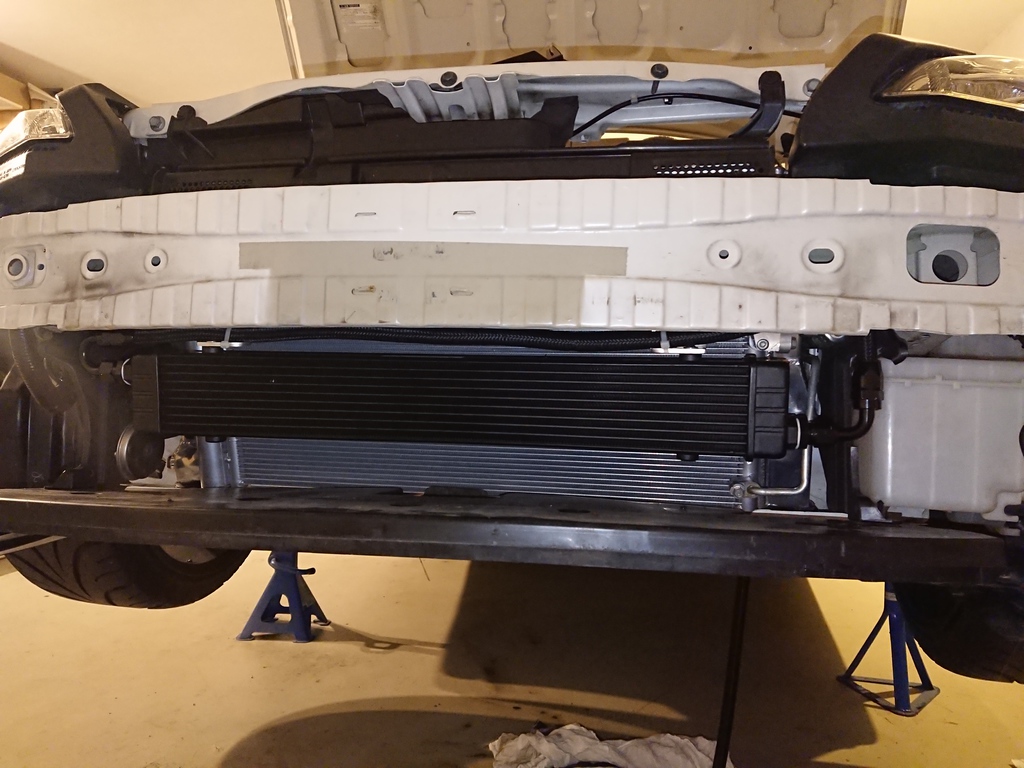 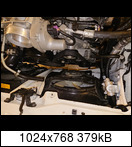  Currently the "hottest" day in our area since the change was 26°C. But I tested by driving uphill in 1st gear with 50kph (~30mph) @4500rpm for about 1.5km (~1mile), then another 3km with constantly maximal acceleration 50kph to 150kph, breaking to 50, start over. I never saw cooling temp over 100°C where I had up to 110°C before while only driving normal at speed below 50kph. So Im optimistic that this is solved. Concerning the skunk2 I have to say, I still would use this Rad for a application where the needed cooling capacity is not that high. But for the LS the internal oil cooler concept is not applicable in my book, since the available space for the cooler in the 86 Chassis is limited. The camaro radiator also follows the internal attempt by using a oil to water heat exchanger mounted on the Block. Also the tranny is cooled internal of the radiator in addition. But the face area of the camaro radiator is about 25 to 30% larger than the 86 radiator. The biggest issue for the skunk2 combined with the LS is the limited space for fans. With an FA20 some Spal Fans would still fit in there with a good shroud. But with the LS more than the flat "Mishimoto" China fans cant be stuffed in between the extra thick radiator and the LS crank pulleys. This leads to my final review for the mishimoto fan shroud: Just dont do it! This shroud is, taking the Fans into considerarion, overpriced by far and the generated aitflow of the OEM shroud is much better then the flow of the mishimoto. I didnt take scientific measurements, but with mishimoto an airflow was hard to feel when putting your fingers infront of the grill while fans was on 100%. With the OEM fans there is definately an airflow you can feel easily. At the same time the OEM Fan doesnt produce 1/3 of the noise. This beeing said, I dont want to miss out that I also changed the software a little and lowered the switching points of the fans by 10°C. While this helps to keep the temps more constant due to lower temp difference between closing of the water thermostat and switching on the fans, this is not the main reason for the better cooling. Before the change the temps didnt stop to rise above the 100% fan speed temperature, they just slowed the increase a little. Now it works as supposed, meaning that the fans are able to cool that thing down and switch of or at least to a lower speed again. Before, this was only possible by driving a few miles with 60mph and moderate load. One last word to the oil temps: surprisingly they stay more stable than expected compared to a water to oil system. Peak temps are slightly lower, low temps are little more down than before, but not to much in my book. But I think this is due to the additional oil thermostat. Without that Id expect over cooling beeing possible even at 20°C ambient temp under low load crusing. Last edited by TRS; 09-13-2020 at 08:44 AM. |
||
|
|

|
|
|
#48 |
|
Senior Member
Join Date: Mar 2018
Drives: LS Swapped Scion FRS = 440HP
Location: Dayton OH
Posts: 298
Thanks: 37
Thanked 276 Times in 134 Posts
Mentioned: 19 Post(s)
Tagged: 0 Thread(s)
|
Entschuldigung, I recalled the other measurement but missed that.
I've been gathering engine locations from that measurement: Vorshlag: 105mm (estimated) CX Racing on 2nd mount hole: 90mm Sikky: 70mm tssfab.us: 70mm Glad to hear you found a reasonable solution on your temperatures.
__________________
Last edited by spitsnaugle; 09-15-2020 at 12:14 PM. |
|
|

|
| The Following User Says Thank You to spitsnaugle For This Useful Post: | TRS (09-13-2020) |
|
|
#49 |
|
Senior Member
Join Date: Mar 2016
Drives: 2013 FR-S
Location: Chesapeake, VA
Posts: 400
Thanks: 61
Thanked 78 Times in 60 Posts
Mentioned: 5 Post(s)
Tagged: 0 Thread(s)
|
How many CFM is the factory fan set?
|
|
|

|
|
|
#50 |
|
Senior Member
Join Date: Nov 2019
Drives: 2013' Toyota 86 (EU spec)
Location: Germany
Posts: 160
Thanks: 32
Thanked 139 Times in 56 Posts
Mentioned: 4 Post(s)
Tagged: 1 Thread(s)
|
Great!  Tahnks! Tahnks!  Very Interesting findings! I still wonder why somone would take the additinal effort for placing the engine 10 to 20mm more back. Makes no sence in my book. 4mm (whats the difference between your setup and my Version) is absolutely within tolerance. But 18mm more backward and you run into massive trouble with breaklines, fuellines, headers, converters, bellhousing,... No idea why someone should decide to go this direction instead of simply building a Corvette spacing out of easily available factory parts to get the necessary space arround the crank pulley. I calculated the impact to the weight distribution front/rear and we are talking about less than 5kg. Sure, in highend motorsports a reasonable thought. But for everything a car anthusiast is doing with his 86 nothing to think about in my book. No reason to hammer down half the tunnel. On the other hand, Im also wondering why the engine should be placed 20mm more forward. Only possible reason could be shifter distance issues. But for this topic there are so many possible solutions out there from relocation in any necessary length by short shifter assemblies up to Magnum transmissions in a variety of endhousings. Another explanation I heared Was height of COG. But height of the COG will not be changed in a relevant manor between any of the different options I know about. The GTO pan combined with the 88mm distance is perfectly flat above the 86 crossmember. It cant be any thinner in this Position, since it would colide with the crank. So also a potential custom pan cannot save any space here. At least not more than 2 or 3mm, what is again nothing worth to make a compromise for or spending additinal money. With a good baffel the GTO pan works also fine for me in matters of constant oil supply. I wasnt able to generate any relevant oil pressure drops in my logs yet. As well, I wasnt able to test on the Track yet, but at least with hardest street driving everything was looking fine with oil pressure. I dont have any pale clue, but for sure more than the Mishimoto fans. This beeing said, I doubt the numbers given for the Mishimoto fans are realistic. But as I said, nothing scientific, no solid proof for anything. Just my 2cents. Last edited by TRS; 09-14-2020 at 10:27 AM. |
|
|

|
|
|
#51 |
|
Senior Member
Join Date: Nov 2019
Drives: 2013' Toyota 86 (EU spec)
Location: Germany
Posts: 160
Thanks: 32
Thanked 139 Times in 56 Posts
Mentioned: 4 Post(s)
Tagged: 1 Thread(s)
|
I received my latest order surprisingly fast. Just unpacked the new clutch kit. I decided for a Tilton ST246 sprung hub, organic 2 disc clutch. As well I will use a Tilton Series 6000 throwout bearing. Looks very promissing. Now I hope to find a Timeslot for installation. Unfortunately my days are pretty packed currently...
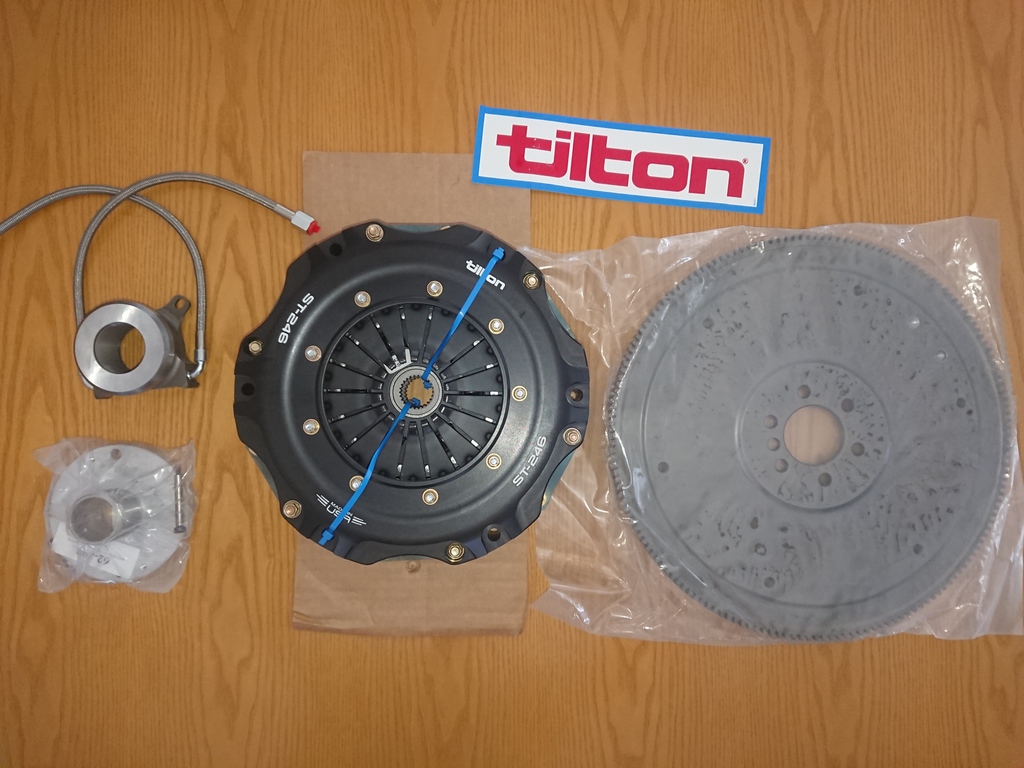 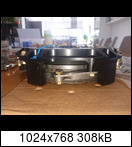 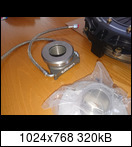 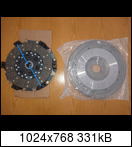 Design for the new shifter is also finalized and under manufacturing. First parts should arrive shortly. Im extremly excited how the combination between the new clutch, shifter and the Magnum F will feel... 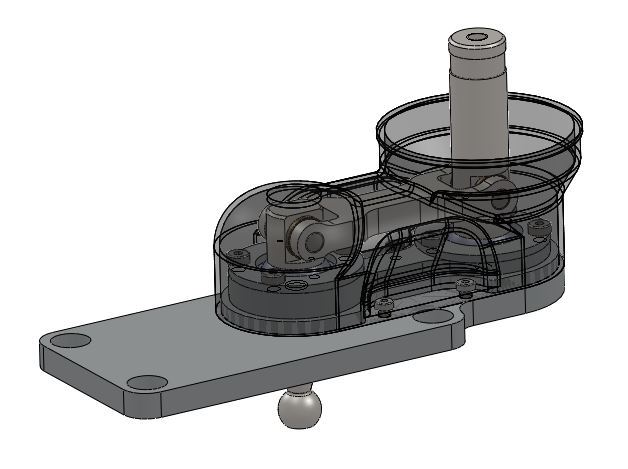
Last edited by TRS; 09-15-2020 at 05:00 PM. |
|
|

|
|
|
#52 |
|
Junior Member
Join Date: Dec 2016
Drives: Whiteout '13
Location: Carribean
Posts: 7
Thanks: 0
Thanked 7 Times in 5 Posts
Mentioned: 1 Post(s)
Tagged: 0 Thread(s)
|
Thanks so much TRS!!!! i agree that OEM fans are very effective!!!! wishing you the best always bro!!!!
|
|
|

|
| The Following User Says Thank You to Emero For This Useful Post: | TRS (10-31-2020) |
|
|
#53 |
|
Senior Member
Join Date: Mar 2016
Drives: 2013 FR-S
Location: Chesapeake, VA
Posts: 400
Thanks: 61
Thanked 78 Times in 60 Posts
Mentioned: 5 Post(s)
Tagged: 0 Thread(s)
|
does the factory fan shroud just bolt up to the koyo radiator or is there altering involved?
|
|
|

|
|
|
#54 |
|
Senior Member
Join Date: Nov 2019
Drives: 2013' Toyota 86 (EU spec)
Location: Germany
Posts: 160
Thanks: 32
Thanked 139 Times in 56 Posts
Mentioned: 4 Post(s)
Tagged: 1 Thread(s)
|
There were no changes necessary. With the LS I just needed to remove two unnecessary parts of the fan shroud to have a little more distance to the crank pulley. With the OEM engine it should be 100% 1:1 replacement. The OEM shroud fits the koyo very good.
|
|
|

|
|
|
#55 |
|
Senior Member
Join Date: Mar 2016
Drives: 2013 FR-S
Location: Chesapeake, VA
Posts: 400
Thanks: 61
Thanked 78 Times in 60 Posts
Mentioned: 5 Post(s)
Tagged: 0 Thread(s)
|
I'm doing an LS swap as well and possible forced induction so heat is a big concern. I was thinking about doing a custom radiator setup, but if the koyo is sufficient, it would make things a WHOLE lot easier.
|
|
|

|
|
|
#56 | |
|
Senior Member
Join Date: Nov 2019
Drives: 2013' Toyota 86 (EU spec)
Location: Germany
Posts: 160
Thanks: 32
Thanked 139 Times in 56 Posts
Mentioned: 4 Post(s)
Tagged: 1 Thread(s)
|
Quote:
1 bigger (than OEM) is better, but too big is bad. Why: Bigger means thicker, since front area is given by the chassis. Thicker means more restriction and lower space for fans as well as for air circulation between fans and front of engine. 2 dont deal with cheap fans Why: Since the rad needs to be thicker (and therefore more restrictive under the estimation that density of the fins stays at least the same) for the increased heat load and the bay is very small for the big V8 you need very reliable and powerfull fans. Go with the OEM fans which seems to be not that bad or go for Spal units. Dont even think about Mishimoto. 3 a higher count of rows and better (more dense) design of the fins is much more important than pure size in matter of thickness and water capacity, especially with the low available space. There are many DIY cores and also so called upgrade radiators out there which have arround half the row count per inch of hight than the OEM radiator. This means you need double thickness to have same active area. In parallel they have a two or three times less dense fin packaging. Meaning you need 2 by 3, so 6 times the thickness of the (very thin) OEM radiator to achieve NOTHING than increasing weight and consume Installation space. So be very carfull with fin design and packaging. The tech site of Verus goes very into detail with that and was an eyeopener also for me. 4 avoid additional heat load to the water circuit by internal oil cooler, transmission cooler,... The available Front area and Installation space in the 86 chassis is simply to small to handle this added heat. For example the front area of the Camaro Mk5 radiator is about 30% bigger. (please dont nail me on this number, I did a comparrison by the manufacturer drawings but to be honest I dont clearly remember the result. But Im pretty sure it was in that range or higher) 5 seal the gaps between the frame and the radiator to prevent hot air being pushed back infront of the radiator. Hot air flowing back infront of the rad is the last thing you want, since it will cool nothing. This more decisive for street driven cars, which might experience things like beeing stuck in trafic jam while 100 degree outside temp and A/C running full power. A situation a racecar will never be into. Thats also the reason why some of them use those minions with leaf blowers when rolling backward into the pit instead of even having a fan mounted. 6 do the best you can with heat Isolation of the headers and so on, I think this is self explanatory 7 try to create additional ports behind the engine for air to escape, for example by utilizing functional fender trims or openings in the undercover. If you dont plan to go high Gs @ high speeds or you have any other reason you dont need it, remove the undercover underneath the oil pan and back. But also make sure you have the Part of the undercover infront of the radiator installed or use another typ of air guide towards the radiator in case your application doesnt allow use of the OEM parts. For my application Im pretty sure the Koyo with external oil cooler and OEM Fan will work now. For a propper FI Setup I might have to use a more advanced radiator like the Verus and create additional air vents, for example in the hood or fenders, since a Front mount intercooler will not help with radiator efficiency. But FMIC is the only possible mounting strategy of a conventinal intercooler for the 86 chassis if you ask me. This beeing said, for FA20 applications, also FI or what ever, Im sure that combined radiators are good way to go, at least until a certain point. This concept reduces weight by erasing the need for an additional oil radiator. Also it erases the need of a thermostat for the oil circuit and guarantees more constant oil temperatures. But as I said it definately Puts heat load on top for the water circuit. Since space for the water radiator is limited, there is a point for each application when you generate that many heat, that the radiator cant handle both circuits. Besides the obvious variable what is engine output power there are more things which decide where exactly this ponit will be. As there is engine concept, engine type, use of the car, etc. Also the ECU mapping has big influence for sure. With a race car you have much more possibilities to tune the engine to "run cold". For street car running under emission regulations your hands are much more tied together in this point. Last edited by TRS; 09-24-2020 at 03:19 AM. |
|
|
|

|
|
|
|
|
 |
| Tags |
| cad, diy, ls swap, ls3 |
| Thread Tools | Search this Thread |
|
|
 Similar Threads
Similar Threads
|
||||
| Thread | Thread Starter | Forum | Replies | Last Post |
| 2JZ Swap - Looking for Labor Info from Swap Shops/XP'd Members | Cookiemonster | Engine Swaps | 18 | 05-25-2019 12:40 PM |
| Dead RB25 Swap, Alive 2jz swap | -Phil | Engine Swaps | 72 | 09-15-2018 02:35 PM |
| Pentosin Trans Fluid Swap | Motul 300 Diff Swap | Impressions | Dezoris | Mechanical Maintenance (Oil, Fluids, Break-In, Servicing) | 15 | 06-06-2017 10:54 PM |
| Ls or 2jz swap? | sgoldberg01 | BRZ First-Gen (2012+) -- General Topics | 13 | 03-22-2016 03:07 PM |